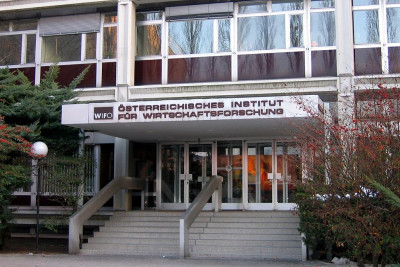Why Austria's Economic Recovery is Losing Momentum
According to the Austrian Institute of Economic Research (WIFO), the global economic slowdown, which mainly affects industry, has dampened Austria's economic outlook. This downturn is only dampened by tourism, which has recovered better than expected since the Covid-19 pandemic.
 WIFO expects the economic outlook to cloud over worldwide. / Picture: © Wikimedia Commons / Herbert Ortner, Vienna, Austria / CC BY-SA (http://creativecommons.org/licenses/by-sa/3.0/)
WIFO expects the economic outlook to cloud over worldwide. / Picture: © Wikimedia Commons / Herbert Ortner, Vienna, Austria / CC BY-SA (http://creativecommons.org/licenses/by-sa/3.0/)
According to the Austrian Institute of Economic Research (WIFO), Austria's economic prospects have dimmed in recent weeks. This is due to a global economic slowdown, which mainly affects industry and has a corresponding impact on the expected recovery in Austria.
WIFO expects tourism to contribute disproportionately to economic growth this year. After +4.8 per cent in the previous year, WIFO expects real GDP growth of 4.3 per cent and 1.6 per cent for 2022 and 2023, respectively.
"While the buoyant industrial economy shaped the overall economic expansion in the previous year, market services will contribute disproportionately to growth in 2022, mainly due to the revival of tourism," says Christian Glocker, one of the authors of the current WIFO forecast.
Several factors contribute to the fact that the upswing of the global economy will be significantly dampened in the two forecast years. These include, in particular, the aftermath of the Covid-19 crisis, the Russian invasion of Ukraine, continued inflation, ongoing disruptions in international supply chains and monetary tightening by central banks.
Any one of these factors could already be hurting global expansion on its own, and the present combination is now hitting the economy all the harder, causing slower growth in the global economy
Now this development hits Austrian foreign trade in two ways and thus affects the Austrian economy. On the one hand, the weakening of the global economy dampens the outlook for domestic goods exports and thus for industry.
On the other hand, the marked increase in world market prices for raw materials and intermediate goods represents a negative terms-of-trade shock, which shapes domestic price buoyancy and weighs on real household incomes.
This is counteracted by the extremely rapid and, above all, strong recovery of tourism, which is accompanied by high growth in service exports and thus in the value added of market services.
Against this backdrop, the Austrian economy is expected to expand by 4.3 per cent in 2022 and thus grow more weakly than in the previous year. Due to the sectoral shift in growth - weakening in industry, strong expansion of market services - Austria's economy can still largely escape the cooling of the global industrial economy in 2022. In 2023, however, the overall economic momentum is likely to slow down more strongly (+1.6 percent).
The favourable development on the labour market will continue in both forecast years. For employment is expected to increase by 3.0 percent in 2022 and by 0.9 percent in 2023. Due to the brisk demand for labour, unemployment has been declining year-on-year since March 2021. This trend will continue in the forecast period.
The expected flattening of economic growth is not expected to have a dampening effect on inflation until 2023.
have a dampening effect on inflation. According to the Harmonised Index of Consumer Prices (HICP), the inflation rate will initially rise to 7.9 percent in 2022 (2021: 2.8 percent). The main reason for this is WIFO's passing on of high prices for raw materials, agricultural and intermediate goods to consumers. In 2023, inflation will slow down to 5.3 percent. However, it will still be significantly above the long-term average.



